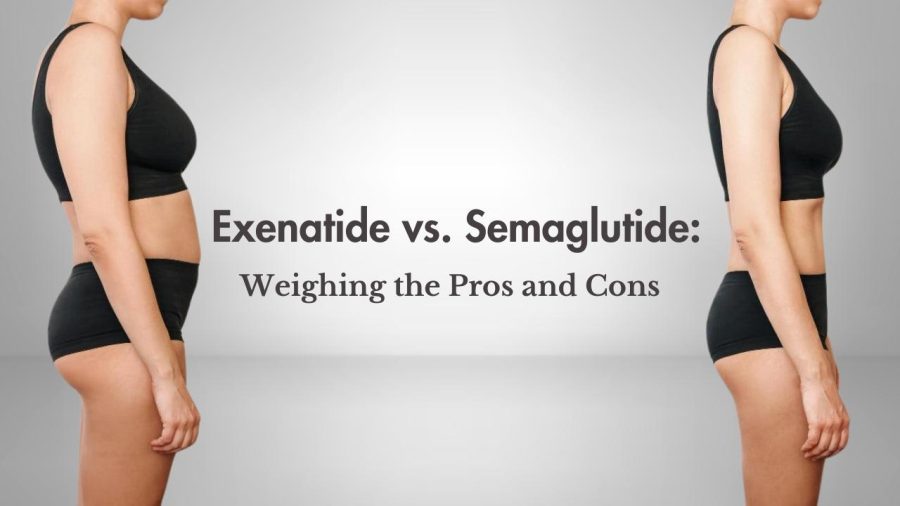
In the dynamic landscape of diabetes management, the emergence of novel therapies such as exenatide and semaglutide has revolutionized glycemic control. Both fall under the class of glucagon-like peptide-1 receptor agonists (GLP-1 RAs), showcasing promising results in reducing blood glucose levels, promoting weight loss, and potentially mitigating cardiovascular risks. This article aims to conduct a comprehensive analysis of exenatide and semaglutide, dissecting their mechanisms of action, efficacy in glycemic control, and safety profiles. Through a comparative lens, we seek to unravel the mysteries of these medications and provide insights into their respective advantages and drawbacks.
Exenatide operates by mimicking the action of GLP-1, a hormone crucial for regulating blood sugar levels. Its activation of GLP-1 receptors prompts insulin release, suppresses glucagon release, and hampers gastric emptying, collectively leading to improved glycemic control.
Clinical trials demonstrate exenatide’s efficacy in significantly reducing hemoglobin A1c (HbA1c) levels, a vital marker for long-term blood sugar control. Furthermore, exenatide has shown consistent outcomes in promoting weight loss, presenting a valuable asset for patients contending with both diabetes and obesity.
Exenatide’s safety profile is generally well-tolerated by patients. Common side effects include mild gastrointestinal symptoms like nausea and vomiting. While hypoglycemia is a potential concern, its incidence remains relatively low compared to some other antidiabetic medications.
Semaglutide, a more recent entrant in diabetes management, aligns with exenatide’s class, acting on GLP-1 receptors. Its mechanism involves stimulating insulin release and inhibiting glucagon, contributing to reduced blood glucose levels.
Clinical trials highlight semaglutide’s impressive efficacy in managing glucose levels. In head-to-head comparisons, semaglutide outperformed exenatide in reducing HbA1c levels, indicating superior efficacy. Moreover, semaglutide showcased enhanced weight loss benefits compared to other GLP-1 RAs, including exenatide.
Semaglutide exhibits a favorable safety profile, with common side effects being mild gastrointestinal disturbances. While the incidence of these side effects may be slightly higher than exenatide, they tend to diminish over time. Importantly, no increased risk of cardiovascular events has been associated with semaglutide use, bolstering its safety credentials.
Direct comparisons through clinical trials reveal nuanced differences between exenatide and semaglutide. Semaglutide demonstrates superior efficacy in lowering HbA1c levels and achieving substantial weight loss compared to exenatide.
Both exenatide and semaglutide exhibit efficacy in reducing HbA1c levels, with semaglutide potentially holding a slight edge. Understanding these nuances is vital for tailoring treatments to individual patient needs.
While both medications share favorable safety profiles, individual tolerability may differ. Exenatide is associated with milder gastrointestinal symptoms, whereas semaglutide may present a slightly higher incidence. Assessing patient preferences and characteristics is crucial in optimizing treatment choices.
In conclusion, exenatide and semaglutide emerge as potent players in the realm of diabetes management, offering significant benefits in glycemic control and weight loss. Exenatide, with its established track record, provides reliable outcomes with once-weekly dosing. Semaglutide, characterized by superior efficacy and once-weekly dosing, introduces additional weight loss benefits. Both medications share favorable safety profiles, with individual tolerability nuances.
The choice between exenatide and semaglutide hinges on patient-specific considerations. Factors such as dosing frequency, efficacy, and individual responses to side effects play pivotal roles. Healthcare providers must meticulously evaluate patient characteristics to tailor treatments effectively.
In summary, exenatide and semaglutide epitomize advancements in diabetes therapeutics, each with their unique strengths. Ongoing research and real-world evidence will further refine our understanding, facilitating nuanced treatment decisions to optimize patient outcomes in the realm of diabetes management. Click on the link for more info

Your health, wellness and aesthetics, in one place.
BitCare © 2023. All Rights Reserved.

BitCare © 2023 . All Rights Reserved.